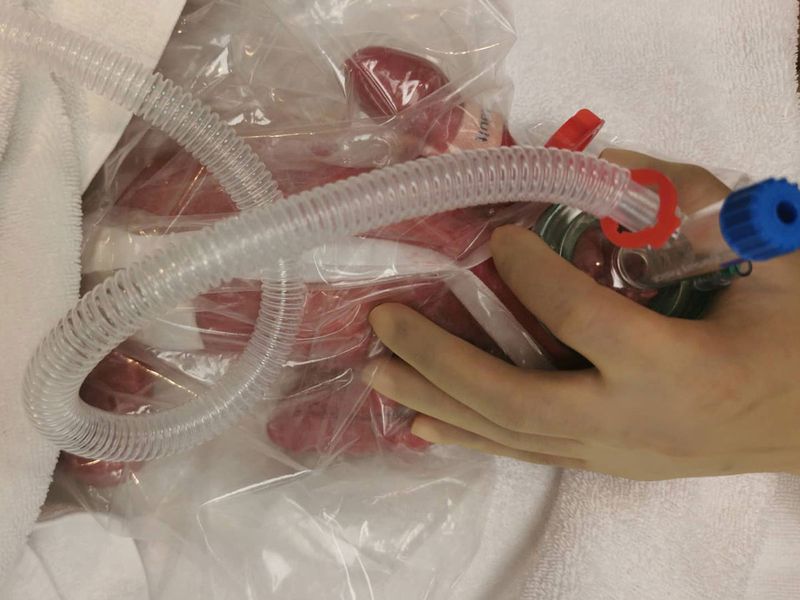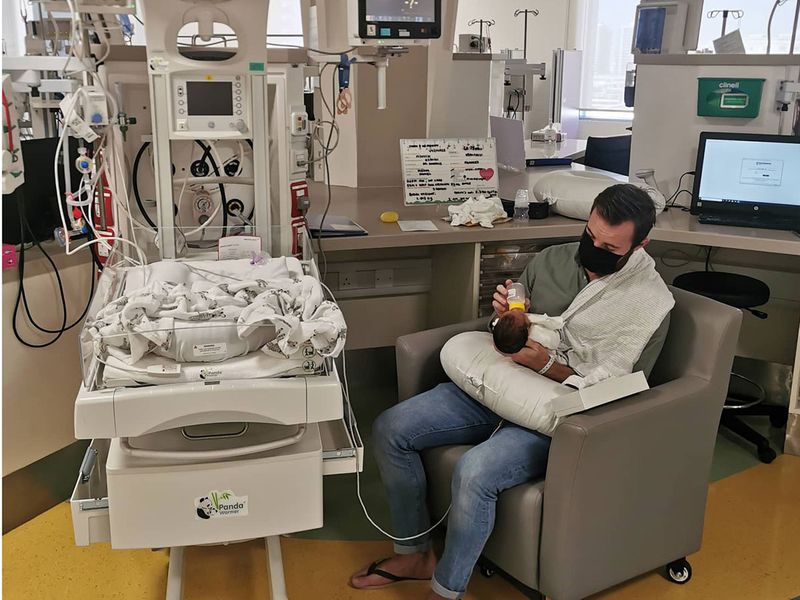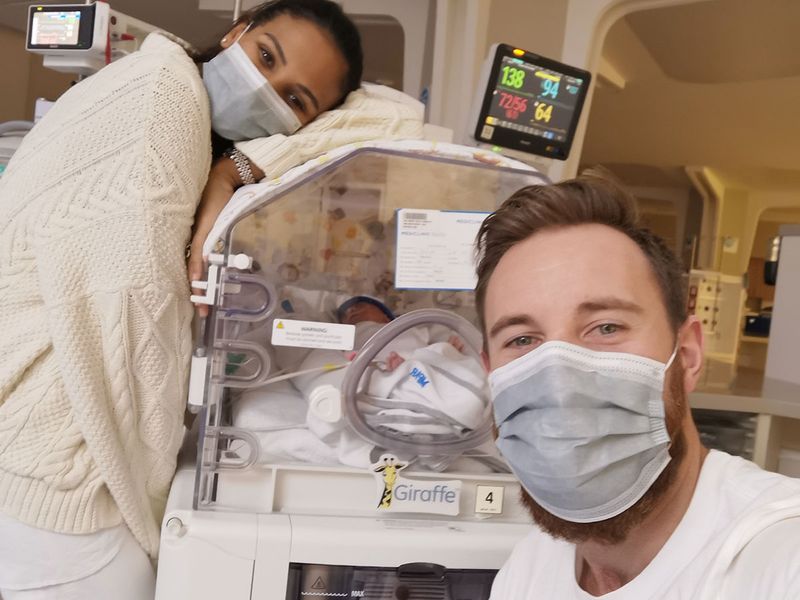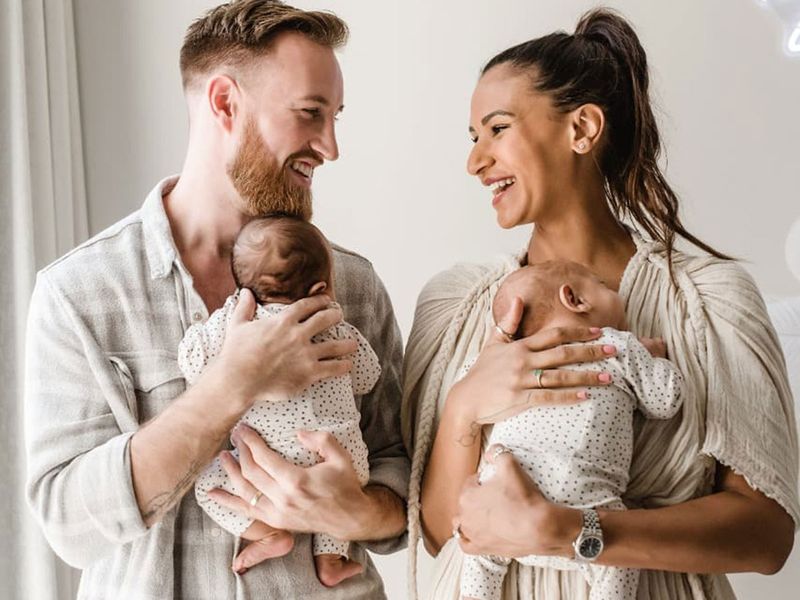‘My babies came out and died – they had to be resuscitated’: Mum
15 million babies are born pre-term every year – one million of them don’t make it
UAE-based British expat Megan Hewitt Dean knew her pregnancy was high risk – it is labelled so in the case of multiples and she was having twins. “We always said 34 weeks [of gestation] and any day after that will be a blessing. So I was expecting [labour at] 35 weeks, maybe a few days in newborn intensive care unit (NICU) but then just to be discharged to go home,” she recalls. And so when they said her cervix had started to shorten at 24 weeks and she was put on bedrest, she took it seriously but wasn’t too concerned. Three weeks on, she was in active labour. “I was moved into the hospital,” she says, recounting what happened that day.
“I spent the whole day in a lot of pain, but I was obviously in a lot of denial, because [I thought] there’s no way I can be in labour now, I still have three months to go. Twin pregnancy is tough – lots of random Braxton Hicks contractions [false contractions], hands everywhere, it’s quite a lot to carry through. So I just thought maybe just having a bad day with the pregnancy and then I called the medical board and I just said, ‘well, I’ve been feeling like this all day’ and they said, ‘well, just come in, just for a chat’. We went in, obviously didn’t pack any sort of hospital bag at all, assuming that I’ll be discharged immediately – they’ll just check the heartbeat, everything is good, and then we could go home. They checked and said, ‘actually, you are three centimetres dilated’. We need to make this labour last as long as possible.”
The 31-year-old was given medication to delay birth, a steroid to help develop the babies’ lungs and a magnesium drip to build the brains. And she was told to make notes of every contraction. “They gave me paracetamol, but no pain medication. I had to feel every single contraction, I had to write it down – the strength of it. I had to be aware of the pain I was under because the more they check my cervix size, the more it starts to dilate, so they had to clinically asses me rather than check – because checking speeds labour up.”
Five days of contractions
Five days into labour, the doctors said it was time – “They said, ‘we need to take you in for emergency C-section, they are coming out now’,” she said.
“The babies came out and both of them died – they needed resuscitating,” she says. After a bout of silence, there was a sudden small cry, she says: “That was the best thing ever.” And then, they got taken away.

“I was in hospital for 10 days total, so I got to stay in hospital for five days after the C-section. A lot of realisation happened in that moment; you very quickly realise that your baby is the sickest one in the NICU and they constantly die, essentially – they constantly stop breathing or their heart stops beating; you are dealing with constant resuscitations. Obviously, I did a bit of Googling when I was in labour, but nothing prepares you for that because it’s really, really intense and so much stuff is happening… it’s a world that you just didn’t know about before….”
The newborns – Teddy and Winnie – were tiny; Teddy weighed 825g and Winnie 1.15kg. The first month was just about stabalising them and making sure they survived. “My little girl wasn’t doing so well, but she was surviving. But Teddy, we really didn’t think he was going to pull through for a long time,” says Hewitt Dean. “The first month, it’s just horrible.”
Going back to work
“At the time, it was just auto-pilot. I had to go back to work five days after giving birth … my babies were in hospital for 67 days, so I had to postpone my maternity leave because I wanted to hopefully have babies that were coming home and I wanted to have my maternity leave when they were home and the only choice to do that was to go back to work straight away. So again, there’s a lot of coping – you’ve got lots of stuff coming in every direction – I just got on with it and I just kept looking for any sort of positivity.

“When Teddy was really, really sick and we thought he really wasn’t going to make it, for example: he didn’t move for about a week apart from his chest and that wasn’t even him breathing, it was the breathing machine breathing for him and all of a sudden he moved one finger… something like that … that’s how you cope – you just look for the small things that make you think, okay, we are going to get out of here.”
At one point Teddy got sepsis – or blood poisoning – and it was touch and go. “Teddy spent longer in hospital. Winnie, our daughter, came home on day 50. So we had spent 17 days juggling both; one premature baby at home, which is really difficult because she only learnt how to eat a week ago, you know, because they can’t sallow, suck and breathe at the same time. And because of that, drinking one bottle can take up to an hour. Pre-mature babies are prone to really bad colic and really bad reflux to the point you need medication for it. So we were dealing with that with Winnie and then also with Teddy, who was still struggling – he was on breathing support when Winnie came home. And we were working still – so the coming home was in stages for us,” she says.
Getting therapy
One month into the NICU routine, when she was allowed to hold the babies – they were stable enough by this time - she had an overwhelming urge to run. “I thought I was doing okay and then when I was allowed to hold the babies, I started to get overwhelming feelings to run away with them, which I know is not normal and really dangerous actually. The feeling was overwhelming – just take them, rip their wires out, rip their breathing tubes out, take them home. The feelings were really real and quite scary and I had to physically hold myself back and that’s when I thought okay, ‘you need to go get some help because you can’t be like this when they are at home, when they are under your care and you are fully responsible for them’. I was diagnosed with post-traumatic stress disorder and high functioning anxiety,” she explains.
Getting physical help
Fortunately, Hewitt Dean had reinforcements. She says that as soon as she went into labour her mum got a flight out. “So my mum was there basically being our nanny; she made sure that we ate, that I was pumping milk, and making our bed. She did everything – because honestly, all we could manage was the hospital and our work and everything else just fell to the side and she just picked it up for us,” she explains.
When Teddy came home, she says, “It was great for two weeks. Teddy came home two days before Mother’s Day. Dan [baby’s father] had his paternity leave and we just enjoyed time as a family but unfortunately, we were readmitted two weeks later to NICU, because he needed emergency surgery because he had a bilateral hernia.”
“When we were readmitted, I think it was only for about a week, so he did quite well in recovering from that but he was so small going into surgery, he was smaller than a full-term newborn baby - I think he was 2.5kg going into surgery … he didn’t fit into his gown, it was like a bedsheet on him. And the cot was absolutely massive. It was a big reminder that prematurity doesn’t end when you graduate – they are just at risk of so many things.”

The after-effects
Plus, preemies grow and develop at a different rate than full-term kids. Pre-term babies have an actual age and a corrected age, explains Hewitt Dean. “The actual age is how old they actually are – 11 months. But their corrected age is if they were born full term what would their age be. So their corrected age is eight months.”
“So when it comes to milestones we go to corrected age not actual age. A lot of doctors and physio and occupational therapists have told us don’t put too much pressure on yourself because they are going to be delayed but it doesn’t mean they are going to have disabilities – it just means they are going to be delayed. They say for every month premature, the baby needs a year to catch up. So by about three our babies will be like full-term babies.”
ALSO READ
- Developmental milestones for an 18-month-old baby
- Mum to a one-year-old? This is what your baby should be doing at this age
- UAE parents: Watch out for these developmental milestones in your four year old
- Parent to a three-year-old? Here’s the developmental milestones they should be reaching
- All the developmental milestones your two-year-old should be reaching
- All the milestones your baby should be reaching up to six months old
Going through such a tough time takes its toll on couples who can either grow closer or fall apart. For Hewitt Dean’s family, it was a solidifying moment. “We’ve been together for 10 years and our relationship was on really solid ground before I even got pregnant. I saw a lot of relationships break down in NICU, and I feel really fortunate that Dan and I are best friends first – we were really each other’s rocks and that made things a lot easier – it made things much better,” she says.
And they decided to pass on not the trauma of the initial days to the twins, but a sense of amazement and wonder. “We were really tired, but then we just turned to each other and said, this is incredible, I can’t believe how strong they are. And we celebrate that. Every month, we celebrate their birthday and take them to bucket list trips, we’ve flown with them – we’ve just decided that we are just going to live life after seeing that they were not going to have a life, we’ve just decided to show them everything we could safely outside the incubator.”

Have a topic you'd like us to cover? Write to us at parenting@gulfnews.com